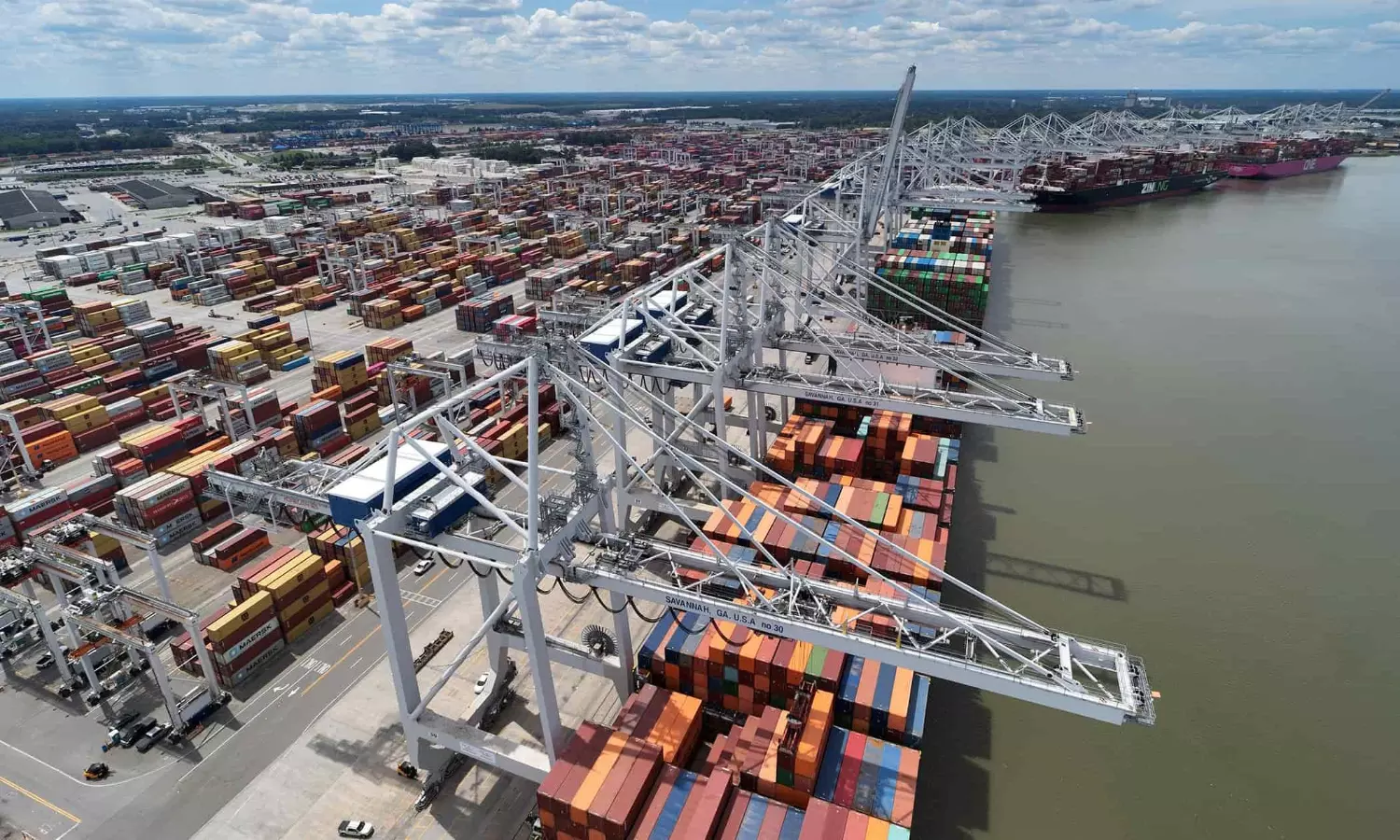Container shipping peak season driven by front-loading of US imports
No sign of sudden U.S. spending boom; significant increase only in recreational goods and vehicles.

Photo Credit: Georgia Port Authority
The U.S. consumer spending data released by the U.S. Bureau of Economic Analysis (BEA) shows that there has been no sudden boom in consumer spending, lending support to the notion that the early peak season for container goods is driven by front-loading of imports and not a sign of consumer spending surge.
"At the highest level, data is separated into goods and services. Goods are further divided into durable goods and non-durable goods. Figure 1 shows the Y/Y growth in both durable goods and non-durable goods for the last three years," says the latest update from Sea-Intelligence.
The Y/Y growth in spending across durable goods shows a sharp drop in the early part of 2024, and while it has been recovering again, it is not yet back to the same growth level as in 2023, the update added. "In the case of non-durable goods, the growth rate has been steadily increasing since the end of 2022. What is, however, abundantly clear here is that there has not been a sudden surge in consumer spending in late spring/early summer 2024."
The only sub-section of goods showing any significant increase in share of consumer spending is recreational goods and vehicles with the share of total goods spending increasing from an average of 10.2 percent in 2019 to 15.1 percent in June 2024."Looking into the components under this subsection, we find that the major driver of this growth is information processing equipment, and more specifically computer software and accessories. Since these components do not move in containers, this boost to consumer spending in the goods sector does not benefit container shipping."
None of the categories that support container shipping have seen any significant level of growth in recent months, strongly suggesting that the growth in container volumes in May and June was largely driven by frontloading of peak season cargo, the update added.


